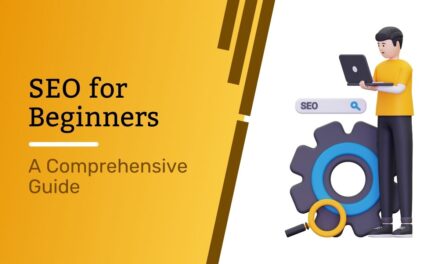Are you ready to unravel the mysteries of Technical SEO? In this comprehensive step-by-step guide, we will break down the fundamental aspects of Technical SEO, all while keeping things simple and jargon-free. So, whether you’re a website owner, a business entrepreneur, or just someone curious about how search engines work, this article is for you. Let’s dive in!
Table of Contents
- What is Technical SEO?
- Why is Technical SEO Important?
- Keyword Research and Optimization
- Website Speed and Performance
- Mobile-Friendly Design
- Crawlability and Indexability
- XML Sitemaps and Robots.txt
- Structured Data Markup
- SSL Certificates and HTTPS
- Canonical Tags
- User Experience (UX)
- Content Quality and SEO
- Link Building and Internal Links
- Monitoring and Analytics
- Conclusion: Putting It All Together
1. What is Technical SEO?
Let’s start with the basics. Technical SEO focuses on optimizing the infrastructure and code of your website to make it more search engine-friendly. It’s like fine-tuning the engine of a car to make it run smoother. You don’t see it, but it’s crucial for overall performance.
2. Why is Technical SEO Important?
Imagine having a beautiful store, but it’s hidden in the middle of nowhere. Without proper SEO, your website might remain invisible on the vast landscape of the internet. Technical SEO ensures your website gets the attention it deserves.
3. Keyword Research and Optimization
To make your website discoverable, you need the right keywords. Research what your target audience is searching for and optimize your content with those keywords. It’s like speaking the language your customers understand.
4. Website Speed and Performance
Have you ever left a slow-loading website in frustration? Users do the same. A fast website not only provides a better user experience but also gets a boost in search rankings.
5. Mobile-Friendly Design
In today’s mobile-dominated world, your website must be responsive and easy to navigate on smartphones and tablets. Google favors mobile-friendly sites, so make sure yours fits the bill.
6. Crawlability and Indexability
Search engines send bots to crawl and index your website. Ensuring that they can easily explore your site is crucial. Think of it as creating a clear map for your visitors.
7. XML Sitemaps and Robots.txt
XML sitemaps help search engines understand your site’s structure, while the robots.txt file tells them what to crawl and what to avoid. It’s like giving directions to a helpful guide.
8. Structured Data Markup
Structured data helps search engines understand your content better. It’s the metadata that gives context to your information. Think of it as adding subtitles to a movie.
9. SSL Certificates and HTTPS
Security matters. Having an SSL certificate and an HTTPS connection not only protects user data but also gives your website a ranking advantage. It’s like locking your front door.
10. Canonical Tags
Canonical tags help prevent duplicate content issues by specifying the preferred version of a page. They tell search engines, “This is the main one.”
11. User Experience (UX)
User experience is paramount. A well-designed, easy-to-navigate website keeps visitors engaged. Search engines appreciate this, and it positively impacts rankings.
12. Content Quality and SEO
High-quality, relevant content is the backbone of SEO. It’s not just about keywords but also about providing value to your audience.
13. Link Building and Internal Links
Inbound and internal links are like bridges between your website and others. They build trust and authority. Quality over quantity is the key here.
14. Monitoring and Analytics
SEO is an ongoing process. Regularly monitor your site’s performance using analytics tools. It’s like keeping track of your vehicle’s mileage and performance.
15. Conclusion: Putting It All Together
In this step-by-step guide, we’ve covered the essential aspects of Technical SEO. Remember, it’s not about making your website appealing only to search engines but also to your human visitors. When you strike the right balance, your online presence will flourish.
FAQs
Q1: What’s the difference between Technical SEO and On-Page SEO?
A1: Technical SEO focuses on the backend of your website, optimizing its infrastructure, speed, and crawlability. On-Page SEO, on the other hand, deals with content optimization, keywords, and user experience.
Q2: How long does it take to see results from Technical SEO?
A2: The results can vary, but you may start noticing improvements in search engine rankings and traffic within a few weeks to a few months after implementing Technical SEO changes.
Q3: Can I do Technical SEO myself, or should I hire a professional?
A3: You can certainly do it yourself with the right knowledge and tools. However, for complex websites, it’s often beneficial to consult with an experienced SEO professional.
Q4: What are some common Technical SEO mistakes to avoid?
A4: Common mistakes include neglecting mobile optimization, ignoring page speed, and failing to fix broken links. Regularly auditing your website can help identify and rectify these issues.
Q5: Is Technical SEO a one-time task, or is it an ongoing process?
A5: Technical SEO is an ongoing process. Regular updates and maintenance are necessary to keep your website in top shape and maintain or improve your search rankings.
In conclusion, Technical SEO is the unseen force that can significantly impact your website’s visibility and success. By following these fundamentals and staying up-to-date with the ever-changing SEO landscape, you’ll be well on your way to making your website search engine-friendly and user-approved. So, start optimizing, and watch your online presence soar to new heights!





